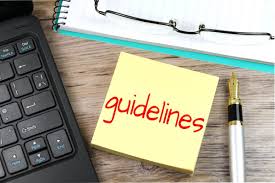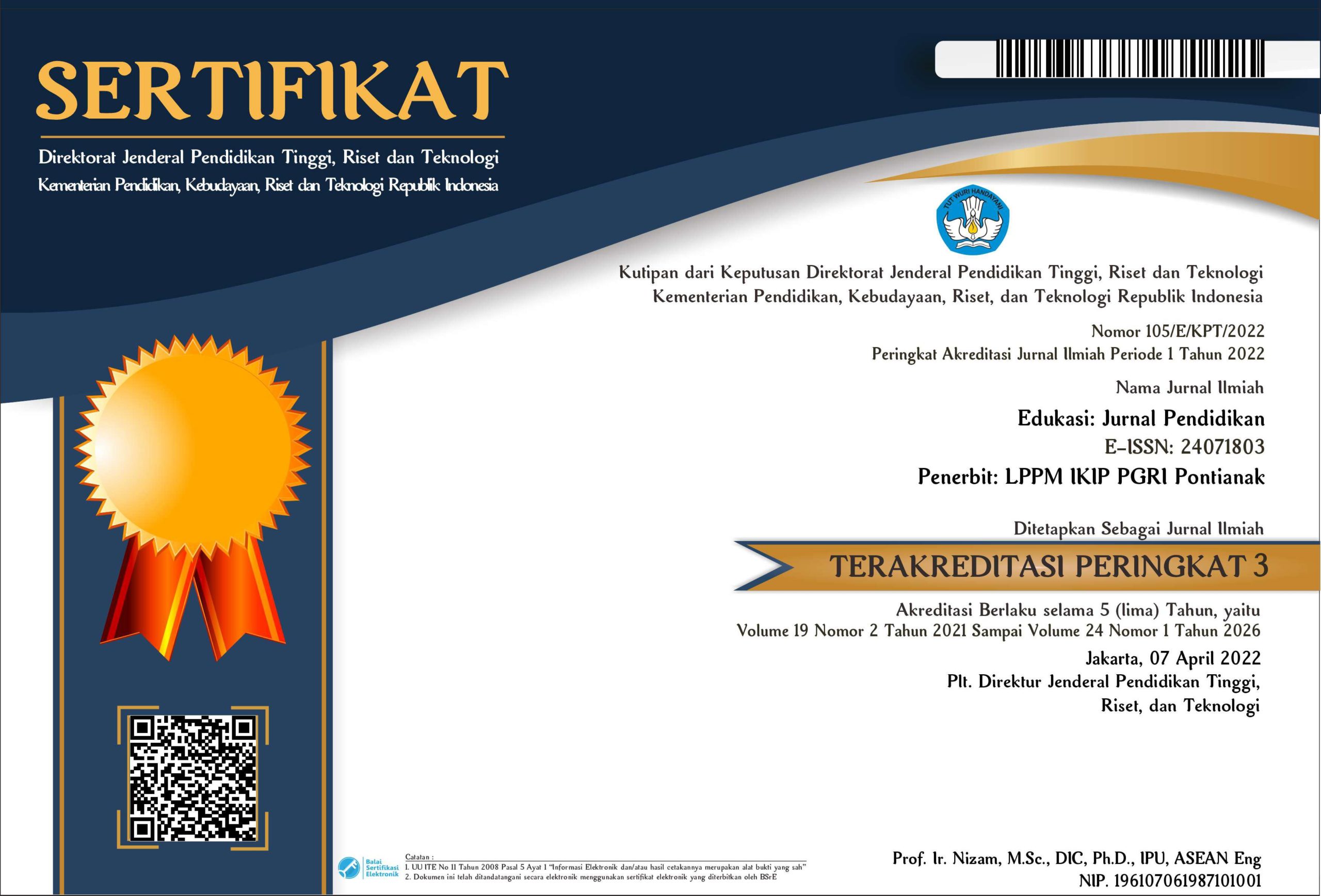Manajemen Menyeimbangkan Penggunaan Otak Kiri dan Kanan dalam Menghadapi Era Revolusi Industri 4.0
DOI:
https://doi.org/10.31571/edukasi.v20i1.3609Keywords:
manajemen keseimbangan, kemampuan otak, otak kiri, otak kanan, balance management, brain power, left brain, right brainAbstract
Abstrak
Penelitian bertujuan untuk mengetahui dominasi kerja otak kiri dan kanan. Metode penelitian yang digunakan adalah deskriptif kuantitatif. Populasi penelitian adalah mahasiswa kebidanan yang belajar Etika dan Hukum Kesehatan berjumlah 40 orang dan semuanya dijadikan sebagai sampel. Responden penelitian diarahkan pada penyelesaian kasus-kasus yang berkaitan dengan pekerjaan yang menjadi profesi. Teknik pengumpulan data menggunakan kuesioner dalam bentuk pretest dan posttest. Teknik analisis data yang digunakan adalah analisis deskriptif. Hasil penelitian menunjukkan pada posttest terjadi perubahan kerja otak kiri dan kanan ke arah berimbang secara bertahap. Diperlukan pemahaman dan peningkatan kreativitas kecerdasan otak secara bertahap agar dapat meningkatkan dan menyeimbangkan kemampuan otak. Â
Â
Abstract
This research aimed to determine the dominance of the left and right brain. The research method used descriptive quantitative. The population of this research was midwifery students who study Ethics and Health Law, totaling 40 people and all of them as samples. Research respondents were directed at solving cases related to work that is a profession. Data collection techniques used questionnaires in the form of pretest and posttest. The data analysis technique used descriptive analysis. The results showed that in the posttest there was a gradual change in the work of the left and right brain in a balanced direction. It is necessary to understand and increase the creativity of brain intelligence gradually in order to improve and balance the ability of the brain.Downloads
References
Branco, H., & Branco, R. A. (2014). The Role of The Designer in the New Social Symphony. 9th Conference of the International Committee for Design History and Design Studies. https://doi.org/10.5151/despro-icdhs2014-0091.
Buzan, T. (2006). The Ultimate Book of Mind Maps. HarperCollins: UK.
Eric, J. (2011). Brain Based Learning Berbasis Otak. Jakarta: Indeks.
Fajri, I., Ar, K., Prajana, A., Yusran, Y., Sanusi, S. (2020). Peningkatan Keterampilan 4C Melalui Model Pembelajaran Berbasis Portofolio. Jurnal Dedikasi Pendidikan, 4(2), 371-380.
Kembara, M. D., Rozak, R. W. A., & Hadian, V. A. (2019). Research-based Lectures to Improve Students' 4C (Communication, Collaboration, Critical Thinking, and Creativity) Skills. Proceedings of the International Symposium on Social Sciences, Education, and Humanities (ISSEH 2018). https://doi.org/10.2991/isseh-18.2019.6.
Munawaroh, I., & Haryanto. (2005). Neuroscience dalam Pembelajaran. In Majalah Ilmiah Pembelajaran, 1(1), 117-125.
Ningsih, S., Marjohan, M., & Nirwana, H. (2019). Contribution of the Implementation of High-Touch Teachers and the Academic Self Concept of Student Learning Motivation In Mathematics Subject. International Journal of Research in Counseling and Education, 3(1), 59-66. https://doi.org/10.24036/0069za0002.
Pink, D. H. (2009). Misteri Otak Kanan Manusia. Yogyakarta: Think.
Prasetya, V. Y. D. (2015). Dominasi Otak Kanan dan Otak Kiri terhadap Hasil Belajar Matematika. Jurnal Buana Matematika, 5(1), 47-50.
Radifan, M. F., & Dewanti, R. (2020). The Incorporation of 4C Skills in Senior High School English Teachers’ Lesson Plans. STAIRS: English Language Education Journal, 1(2), 75-87.
Sadiqin, I. K., Istyadji, M., & Winarti, A. (2017). Mengoptimalkan Potensi Otak Kanan Siswa dalam Pembelajaran Kimia. Jurnal Inovasi Pendidikan Sains, 8(1), 27-35.
Selman, Y. F. (2020). Evaluation of The Implementation of 4C Skills in Indonesian Subject at Senior High Schools. Jurnal Pendidikan Indonesia, 9(2), 244-257.
Siswati, S. (2021). Model Problem Based Learning by Using Mind Mapping pada mata Kuliah Etika dan Hukum Kesehatan di FKM Universitas Andalas. Padang: Universitas Andalas.
Sitorus, M. (2009). Reliability, Responsiveness, Assurance, Empathy dan Tangibles terhadap Kualitas Pelayanan Publik (Studi Kasus Kantor Pelayanan Terpadu Kota Dumai). Jurnal Borneo Administrator, 5(1), 1-15. https://doi.org/10.24258/jba.v5i1.40.
Supena, I., Darmuki, A., & Hariyadi, A. (2021). The Influence of 4C (Constructive, Critical, Creativity, Collaborative) Learning Model on Students’ Learning Outcomes. International Journal of Instruction, 14(3), 873-892. https://doi.org/10.29333/iji.2021.14351a.
Tanuwidjaja, G., Wonoseputro, C., & Budihardja, S. (2013). Evaluasi Kualitas Ruang Fasilitas untuk Pasien Jantung di Surabaya Berbasis Persepsi Pengguna dalam http://repository.petra.ac.id/16439/1/Publikasi1_10012_760.pdf. Diakses 1 Juni 2022.
Triana, D., Anggraito, Y. U., & Ridlo, S. (2020). Effectiveness of Environmental Change Learning Tools Based on STEM-PjBL towards 4C Skills of Students. Journal of Innovative Science Education, 9(2), 181-187.
Wade, N. (1994). Roger Sperry, a Nobel Winner For Brain Studies dalam https://www.nytimes.com/1994/04/20/obituaries/roger-sperry-a-nobel-winner-for-brain-studies-dies-at-80.html. Diakses 1 Juni 2022.
Wahyuningsih, B. Y., & Sunni, M. A. (2020). Efektifitas Penggunaan Otak Kanan dan Otak Kiri terhadap Pencapaian Hasil Belajar Mahasiswa. Palapa, 8(2), 351-368. https://doi.org/10.36088/palapa.v8i2.885.
Widiana, I. W., Bayu, G. W., & Jayanta, I. N. L. (2017). Pembelajaran Berbasis Otak (Brain Based Learning), Gaya Kognitif Kemampuan Berpikir Kreatif dan Hasil Belajar Mahasiswa. JPI (Jurnal Pendidikan Indonesia), 6(1), 1-15. https://doi.org/10.23887/jpi-undiksha.v6i1.8562.
Downloads
Published
How to Cite
Issue
Section
License
Authors who publish in this journal agree to the following terms:
- Authors retain copyright and grant the journal the right of first publication with the work simultaneously licensed under a Creative Commons Attribution License (CC-BY-NC) that allows others to share the work with an acknowledgment of the work's authorship and initial publication in this journal.
- Authors are able to enter into separate, additional contractual arrangements for the non-exclusive distribution of the journal's published version of the work (e.g., post it to an institutional repository or publish it in a book), with an acknowledgment of its initial publication in this journal.
- Authors are permitted and encouraged to post their work online (e.g., in institutional repositories or on their website) prior to and during the submission process, as it can lead to productive exchanges, as well as earlier and greater citation of published work.

 Download: 666
Download: 666


















